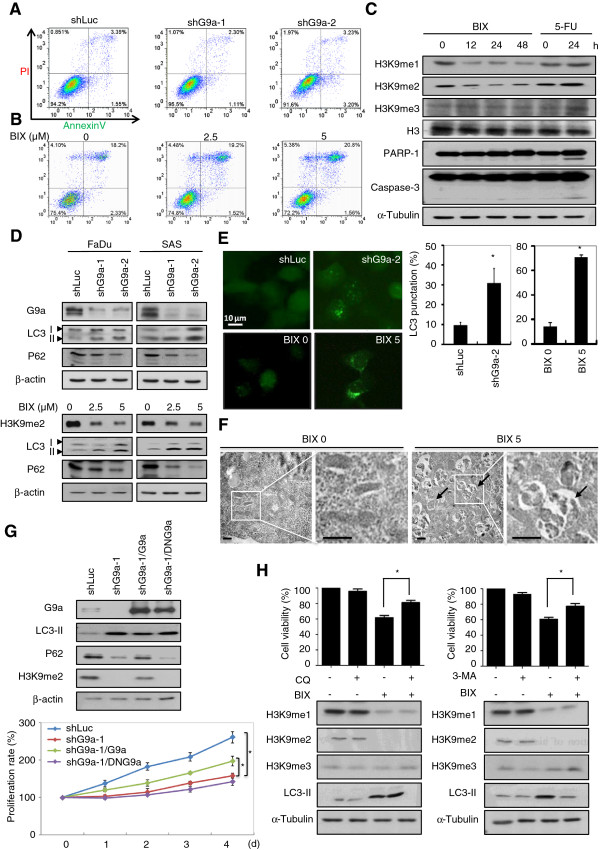Figure 3.

Inhibition of G9a induces autophagy-dependent death in HNSCC cells. (A) Flow cytometry analysis of apoptosis and necrosis of FaDu cells with control or G9a-knockdown group. (B) Flow cytometry analysis of apoptosis and necrosis of vehicle or FaDu cells treated with 5 μM BIX-01294. (C) Western blot analysis of H3K9 methylations and apoptosis markers (PARP and caspase-3) expression in drug-treated FaDu cells. α-Tubulin is shown as an internal control. (D) Western blot analysis of G9a, H3K9me2, autophagy marker p62 and LC3 expression in G9a-knockdown or BIX-01294 treated cells. β-actin is shown as an internal control. (E) Photograph of LC3-GFP expression in FaDu cells and the punctuation quantification. Scale bar, 10 μm. Values are presented as mean ± SD of 5 different fields in each group. A significant difference was observed between the groups (**, p < 0.01). (F) Examination of autophagosome formation by transmission electron microscopy. Arrows denote the autophagosome structure in the cytoplasm of FaDu cells. Scale bar, 1 μm. (G) Western blot analysis of autophagic marker expression in FaDu cells with G9a-knockdown and restored with wild-type G9a or dominant-negative G9a (DN-G9a). The proliferation rate was measured by MTT assay (*, p < 0.05). (H) FaDu cells were treated with DMSO or 5 μM BIX-01294 in the presence or absence of 2 mM 3-MA or 100 μM chloroquine. Cell viability was measured by MTT assay 24 hours later.
